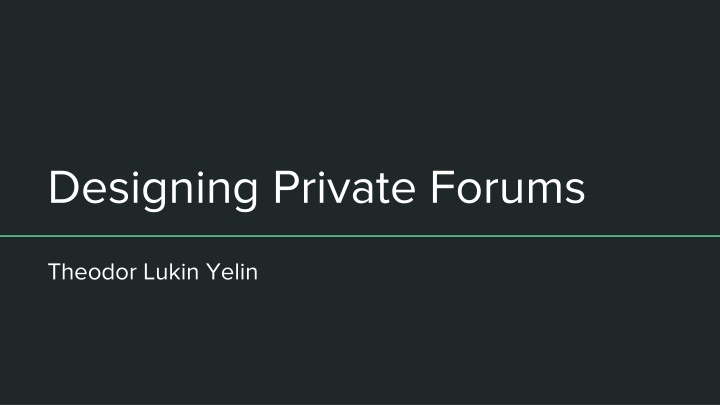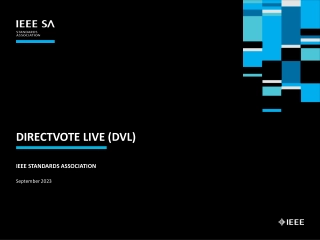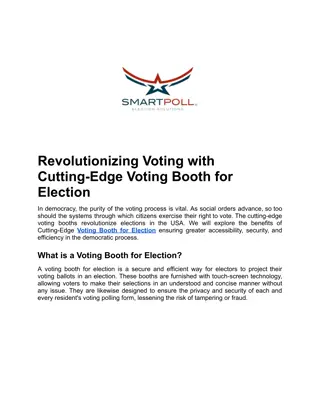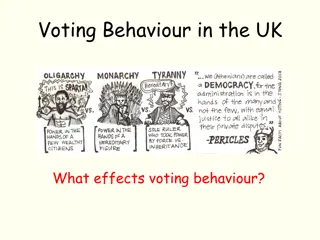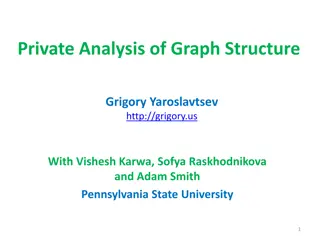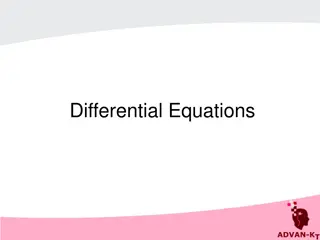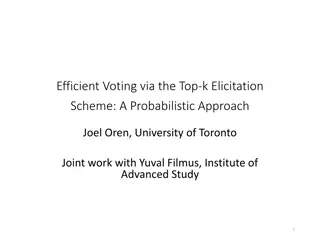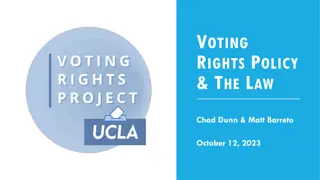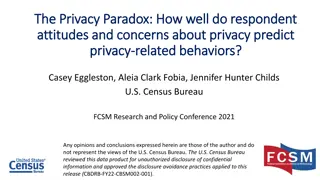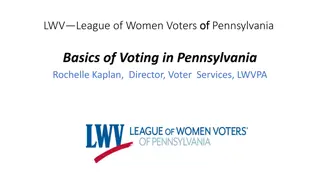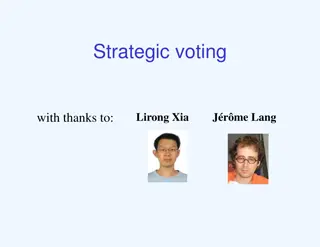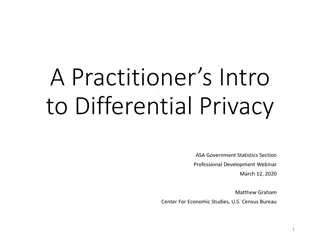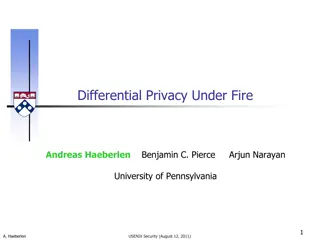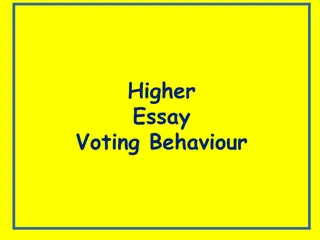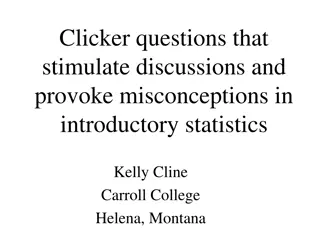Enhancing Voting Privacy Through Differential Privacy Techniques
Delve into the world of private forums and discover how Differential Privacy can protect individual voting patterns while enabling accurate aggregate statistics. Learn about hiding vote values, properties of randomized voting, and maximizing query accuracy with minimized identification risks.
Download Presentation

Please find below an Image/Link to download the presentation.
The content on the website is provided AS IS for your information and personal use only. It may not be sold, licensed, or shared on other websites without obtaining consent from the author.If you encounter any issues during the download, it is possible that the publisher has removed the file from their server.
You are allowed to download the files provided on this website for personal or commercial use, subject to the condition that they are used lawfully. All files are the property of their respective owners.
The content on the website is provided AS IS for your information and personal use only. It may not be sold, licensed, or shared on other websites without obtaining consent from the author.
E N D
Presentation Transcript
Designing Private Forums Theodor Lukin Yelin
Acknowledgements Albert Kwon PRIMES Program Friends and Family 2
Examples of forums Reddit, Facebook Title/Content Views/Votes 4
Lack of privacy on existing forums Voting patterns are immediately available to the servers Can create strong profiles of people based on patterns 6
Threat model and goals Enable accurate aggregate statistics on the votes without revealing individual votings to the adversary 7
Differential privacy Goal: Maximize the accuracy of queries from databases, while minimizing the chances of identifying individual records Add noise (randomness) to database (votes) 3 main mechanisms Randomized Responses Noisy database Noisy answers to queries 8
Design 9
Voting privacy Value of the vote What the user votes on 10
Hiding values of votes H Respond with V p H Respond with up q User vote V T Respond with down T 11
Properties of randomized voting Estimating true count Observed = TrueCount p + (1 - p) q TrueCount = (Observed - (1-p) q) / p Quantifying Privacy H = Pr[R=Up | T=Up] / Pr[R=Up | T=Down] Smaller H = more private 12
Accuracy of votes - 95% confidence intervals Computed 95% confidence intervals Votes Actual Interval Size Interval Size (%) 100 49 1000 483 10000 5029 100000 1000000 10000000 50112 500260 5000219 339 1164 p=0.5, q=0.5 9 27 97 3167 8.91 2.68 0.97 0.34 0.12 0.03 Votes Actual Interval Size Interval Size (%) 100 50 1000 501 10000 4993 100000 1000000 10000000 49970 499995 5000120 165 p=0.75 , q=0.5 7 18 55 614 1664 6.97 1.85 0.55 0.16 0.06 0.02 13
Hiding values of votes H Send V to server p H Send up vote q User vote V T Send down vote T 14
Trading off accuracy and privacy Privacy (H) as function of p and q Accuracy and Privacy are inversely correlated Choose tradeoff point based on needs of system 15
Conclusions and Outlook Differential privacy is viable Needs ~100 votes to be accurate Hiding what user votes on remains inefficient Working on full prototype evaluation 16
